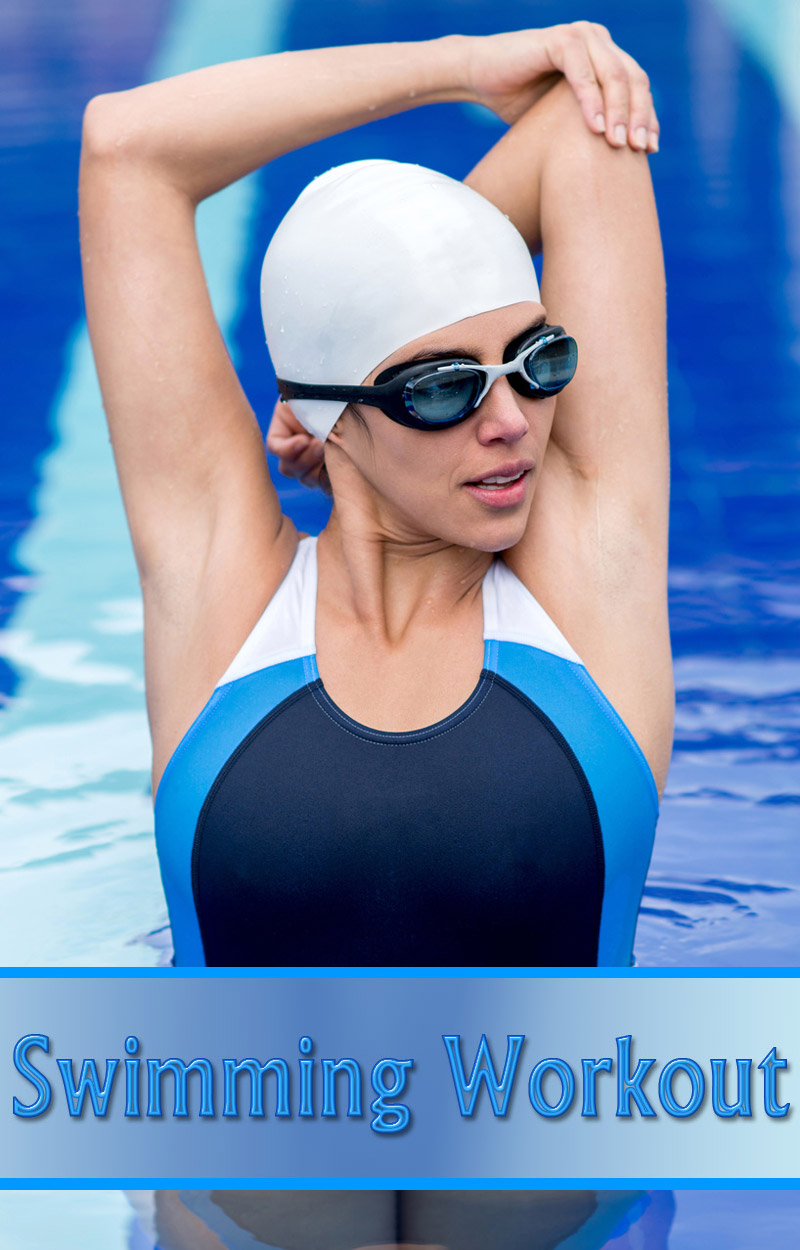
No other workout burns calories, boosts metabolism, and firms every muscle in your body (without putting stress on your joints) better than a swimming workout. A pool might not be the first place you think of going when you’re looking to shape up and slim down—but perhaps it should be.
Why Swimming Workout Works
The body-shaping benefits of swimming workouts are the result of a perfect storm of calorie burn and muscle recruitment. An easy swim burns around 500 calories an hour, while a vigorous effort can torch almost 700. And because water is nearly 800 times denser than air, each kick, push, and pull is like a mini resistance workout for your entire body—especially your core, hips, arms, shoulders, and glutes. So in addition to blasting calories as you swim, you build lean muscle, which ignites your metabolism so that you burn more calories once you’ve showered and dried off.
The irony is that while swimming makes you lean and mean, it’s also kind to your body. Water basically neutralizes gravity, so you become virtually weightless when immersed, giving your joints a much-needed vacation. You can swim almost every day without risking injury, and you can’t say the same for running or strength training.
And that makes swimming something you can do for your entire life—a major bonus because it can literally help you stay younger. Research shows that habitual swimmers are biologically up to 20 years younger than their actual age. The data, which were presented at an American College of Sports Medicine Conference, revealed that a swimmer’s blood pressure, cholesterol levels, cardiovascular performance, central nervous system, and cognitive functioning are all comparable to someone far younger.
The Starting Block
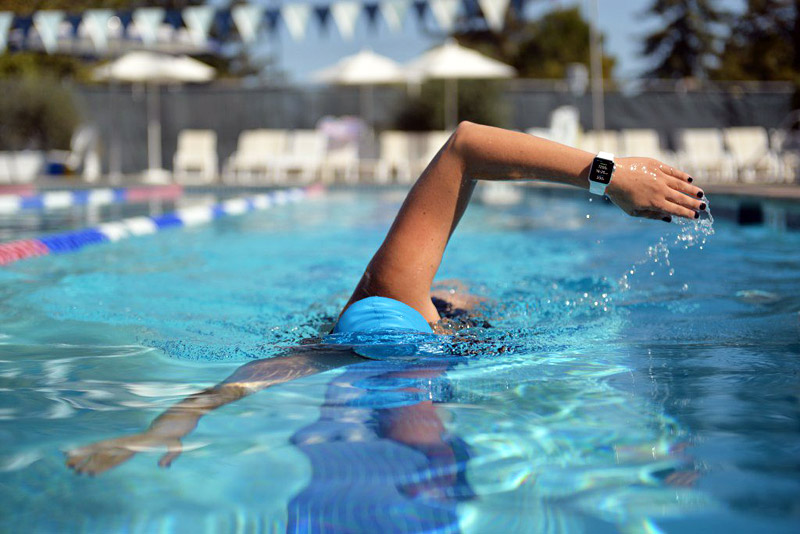
Most newbies hit the pool with high expectations. They jump into the water all gung-ho and plan to swim for a solid half hour. Four minutes later, they’re inevitably hanging onto the edge, feeling completely defeated. That’s because training in water requires your cardiovascular system and muscles to work differently than they do on land.
Your lungs have to adjust to a new way of breathing (you can’t suck in air anytime you want like with dry-land workouts, and unlike any other form of exercise, swimming requires every muscle in your body to work as a team to keep you moving and staying afloat.
The key to an effective swim routine is splitting it into shorter segments, mixing in a variety of work and rest intervals, and using different strokes, drills, and intensities. It’s not only more interesting but also a better workout. Don’t worry that you’re wasting time by taking rest breaks. Swimming isn’t like walking, during which your heart rate drops quickly. It stays raised for at least 30 seconds after a few laps.
Try this starter swimming workout: Swim four lengths of the pool at an easy effort (catch your breath at the wall between lengths if you need to). Rest for 30 seconds. Repeat five to 10 times. Try that two or three times a week for the first two weeks. If you haven’t swam for a while, use a kickboard for the first four lengths. It will help you get used to swimming without having to coordinate your arms and legs. Once you master this workout, try “Get a Plan” on the back of the tear-out cards.
Different Strokes
Freestyle
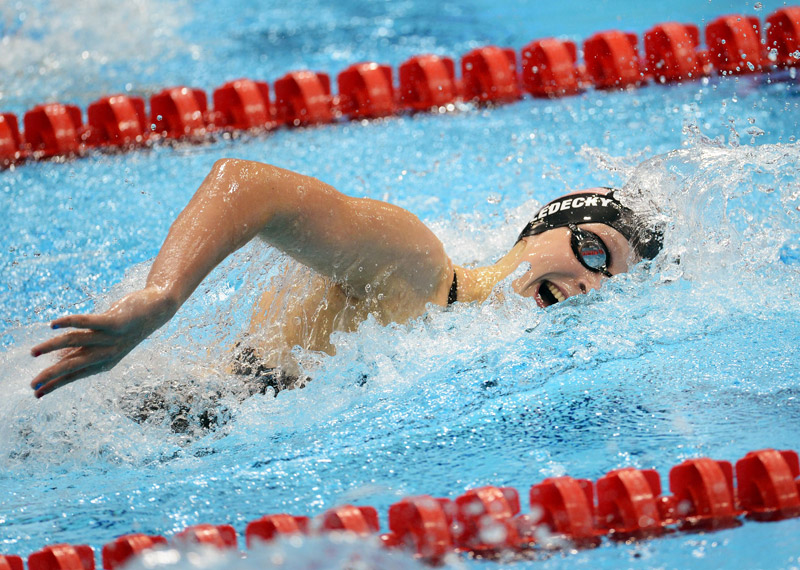
Freestyle is a fan favorite because it’s easy to learn and it burns major calories. But it pays to mix things up. Using various strokes balances your muscles and helps beat boredom. Two to try are backstroke improves your posture by working your back and shoulder muscles) and breaststroke (it uses the hip and inner-thigh muscles, which are often missed in other workouts).
Backstroke
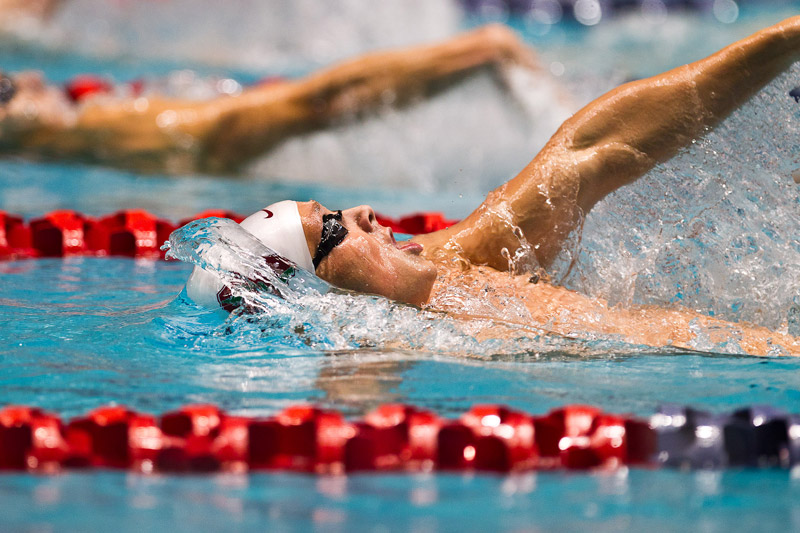
Eyes up. Look straight up at the sky or ceiling—not at your toes, which causes your hips to sink—so your head is in line with your spine. Make a Y. Reach back with each arm at a 45-degree angle to your body; it places less stress on your shoulders and makes your stroke stronger.
Breaststroke

Sweep through. Reach your arms overhead, palms together. Rotating your palms outward, pull down until your hands are nearly level with your chin. Bring your hands inward by your chest, then reach again. Whip it. Bend your knees and bring your heels toward your butt. Turn your toes outward and kick your legs back and together (like a frog) as you extend your arms forward.
Butterfly Stroke

The butterfly stroke stands out among because of it’s unique and spectacular technique. It uses a symmetrical arm stroke with an above water recovery. It also uses a wave-like body undulation and a dolphin kick. Butterfly is the second fastest swim stroke after freestyle. It has a reputation of being hard to learn and is quickly exhausting. But once you have mastered it, swimming a few lengths of butterfly can be a lot of fun!
The most popular swimming strokes are listed , but there are a lot more. Learning several of these different swimming strokes can be quite interesting. As a beginner, you should first learn a few basic swimming techniques to get comfortable in the water. You will then be well-prepared to learn how to swim these popular swim strokes.




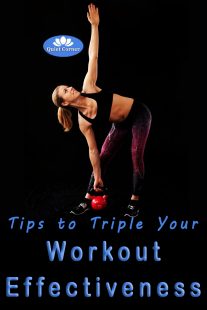
Leave a Reply